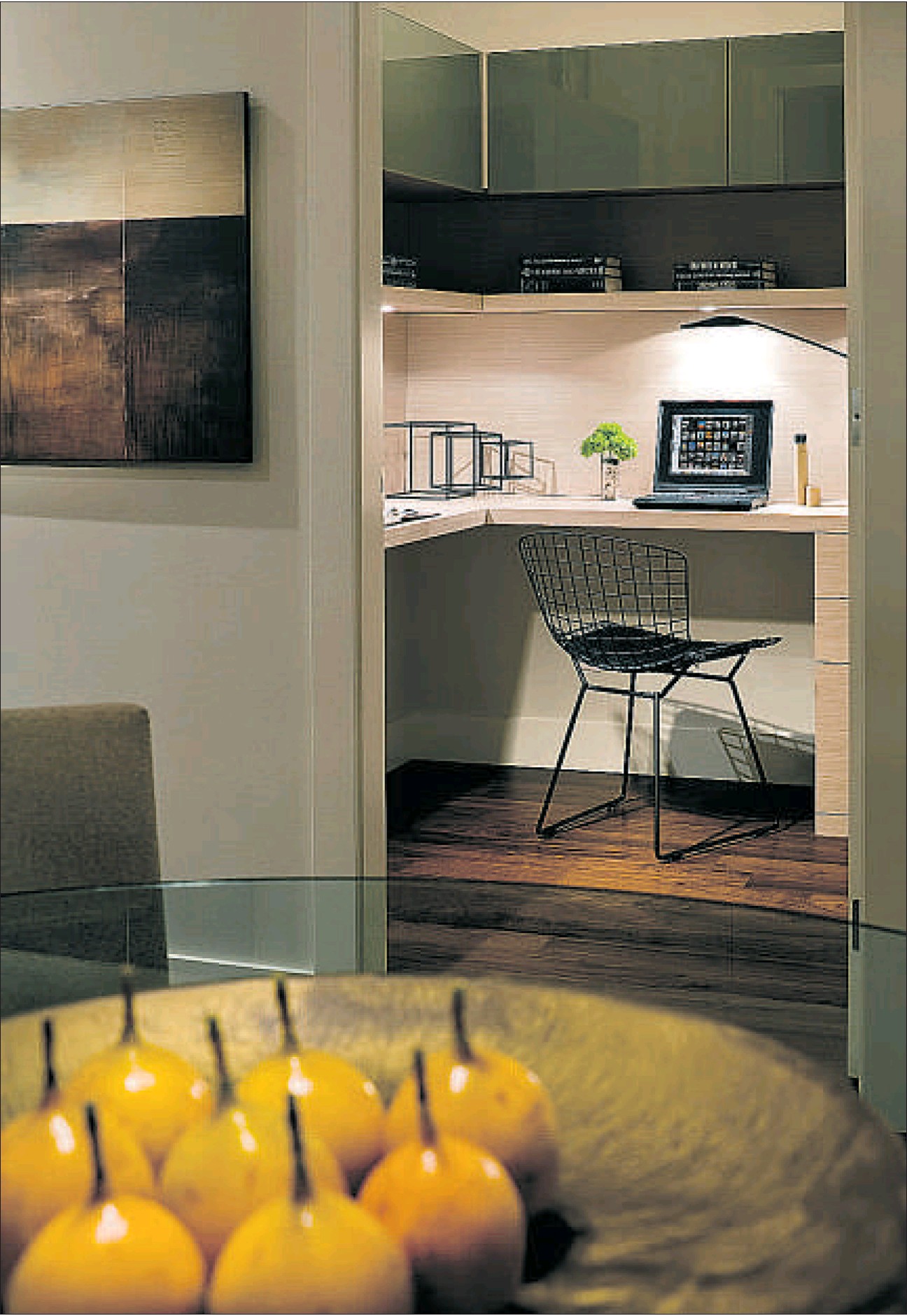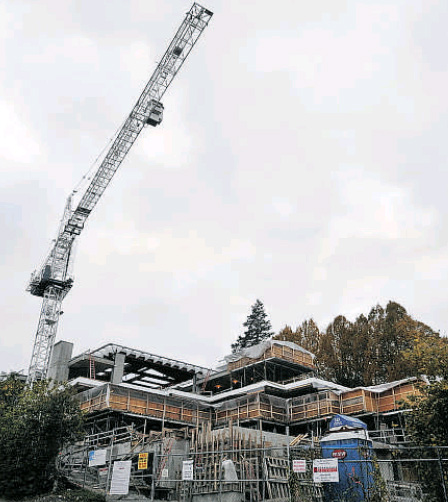In these tough economic times, there are few role models to help men cope. So what’s a guy to do? Here’s what
Douglas Todd
Sun
Stu Hoover has seen first-hand the pressure, despair and repressed anger many men experience earning a living.
Hoover was having an after-work beer in a Calgary bar when two friends in the energy industry became embroiled in an intense “heart-to-heart” discussion about their difficult workplace.
Suddenly the conversation “literally exploded” and one of the friends punched the other in the face. The man who began the fight has never returned to his high-paying job, presumably out of shame. The beer-fuelled fight has also wound up in court.
“It was shocking. It was traumatizing,” says Hoover, 38, a trained economist who now lives in Vancouver. Hoover says many men move to oil-rich Alberta with one intention: to make as much money as they can for themselves and family.
To add to Calgary’s grim energy-industry reality, where many routinely bring home between $300,000 and $1 million a year, a few months after the barfight, Hoover was downsized out of his own job.
The bar battle was all the motivation Hoover needed to make the huge personal decision to say goodbye to other possibilities in the oil and gas sector and enroll last year in a University of B.C. counselling psychology master’s program.
Now Hoover is focusing on career-related men’s issues; or, as he says, “the place where economics meets psychology.”
Hoover believes his former friend “snapped” because, like many men, he was taking advantage of the numbing effects of alcohol to unload about his stress at work. But his deep-down pain was not being heard by his inebriated workmate.
Hoover knows things could have been different for his former colleagues. In the right context, he has come to learn in the past year or so that men can be there for other men, with, or especially without, alcohol.
After exploring profound personal changes in recent years, Hoover is joining other B.C. men in developing what might be considered a new kind of men’s movement, which is a little different from the one associated with poet Robert Bly in the 1980s and ’90s.
The time is more than right for men to learn how to back each other up, Hoover believes. The ceaseless pressure that men are feeling to keep themselves, spouses and children living in the “style to which they’re accustomed” has become more intense during this economic crisis.
Many have been calling it a “mancession.”
The word has been coined because this recession is hitting North American and European male workers far harder than female employees.
Jobs in the male-majority industries of construction and manufacturing have been flying out the door to low-wage countries, while female-dominated spheres such as health care, education and the public service have not been pummelled to the same degree.
As Hoover and anyone who understands males will say, there is no quicker way for most men to lose their identity — their sense of self-worth, their essential masculinity — than to be dumped out of a money-earning job. They feel like failures.
LOSING THEIR LIVELIHOODS
With Statistics Canada reporting this year that men are losing their livelihoods at four times the pace of women, some health care agencies are reporting that devastated men, their all-important “provider” image in shreds, are looking for someone to talk to.
Traditionally, men have had a great deal of trouble seeking help after losing a job or enduring other crises. In times of emotional chaos, the standing North American statistic is that, while one in three women seeks some sort of counselling, only one in seven men does.
How can battered men find hope?
In the midst of the “mancession,” some are making headway in responding to fellow males who are struggling with all kinds of downturns in their lives.
Innovative psychotherapists at the University of B.C. and throughout Metro Vancouver have been taking the lead in providing a safe place for men to air their sorrow and dreams: in the company of other men.
Hoover has worked in various ways with UBC educational psychology professor Marvin Westwood and Dr. David Kuhl, who also works for Providence Health Care.
They are coming up with a new vocabulary, sometimes literally, to help men better understand and support each other.
Over the years, Westwood and Kuhl have led more than 50 workshops for men everywhere from Bowen Island to the Rocky Mountains. Participants have ranged from grandfathers to young male adults.
Westwood and Kuhl recognize it can be a tough time to be a man these days, especially in a harsh economy.
While jobs for traditional male “breadwinners” are increasingly under threat — and women now make up half the workforce in North America — the gender balance in higher education has shifted, leaving many men off balance.
Men are wondering, Kuhl says, how they fit in as “minorities” in academia, where roughly 60 per cent of those enrolled in most Canadian undergraduate, graduate and professional schools are now female.
Larry Green, a Vancouver therapist who has specialized in working with older and especially younger men, says some women have long had to endure being treated as “sex objects.”
But men, more subtly, have unconsciously been treated by the culture as “success objects,” valued mainly for their ability to be productive: providers who put food on the table.
With this recession highlighting how the economy may be slowly shifting against men, their upheaval is exacerbated.
To add to the crisis, North American culture continues to fail to offer up many models for what it means to be a healthy male.
The mass media and entertainment industries are full of destructive and contradictory images, ranging from men as helpless buffoons to men as unfeeling action figures.
There are few models of manhood embodying strength and integrity.
WHERE TO GO FOR SUPPORT
Do real men work out problems on their own?
Or is their somewhere they can go for support?
Westwood, 65, and Kuhl, 55, are finding that most men — just as they are quick to physically lend a hand to men on a sports team or to build a garage — also give a damn about the inner pressures on their fellow male travellers.
“Men want to help other men,” says Westwood. In an environment that guarantees confidentiality and safety, he says they can easily learn how to be there at an emotional level for other men.
“Men don’t want to be coddled by other men. They just want to be seen for who they are. And as they tell their stories, they can be more honest about how they experience life,” Westwood says.
Canadian men looking for mutual support are finding something different than they did in the 1990s, when Bly, the acclaimed American poet and author of the best-seller, Iron John, was leading the so-called “mytho-poetic” men’s movement.
It emphasized literature, psychological archetypes and wilderness retreats as paths to men’s wholeness.
Bly often talked about how crucial it was for men to come together over their “grief,” to regret those things they never got in a society that values them mostly for work and winning.
What is different about men’s psychological efforts in the 21st century?
Westwood, Kuhl, Hoover and colleagues have worked with high-flying executives, lawyers, police officers, health care workers, clergy, teachers, professors and more.
They have a particular specialty in lending a hand to Canada’s battle-worn soldiers, the kind of guys our culture often refers to as “men’s men.”
The men’s group leaders are coming to understand the kinds of approaches that leave men feeling cold and isolated or, alternatively, light them up.
They’re even finding out which words work for men and which don’t. They’re developing a new vocabulary for men.
For instance, the men’s group leaders don’t talk about men becoming more “sensitive.”
Men aren’t drawn to that, and neither, really, are most women. “Sensitive” men are associated with soft ones, even wimps, who don’t stand up for anything.
Instead, Westwood, Kuhl and those who co-lead groups with them, talk about men who are “honourable.”
DEFINING ‘HONOURABLE’
An honourable man, they say, is honest, including about himself. “He knows his strengths and weaknesses.”
An honourable man is not afraid to combine “vulnerability and competency.” An honourable man is willing to be unpopular.
The 20th-century call for men to share their “feelings” has also worn a bit thin these days.
Instead, Westwood and Kuhl urge men to “express” themselves or, better yet, tell their “story.”
The new lexicon goes on. Rather than suggesting men follow their “intuition,” for instance, they’re encouraged to trust their “gut.”
These B.C.-based men’s group leaders don’t even necessarily ask men to “support” each other either. Instead, they talk about providing each other with “backup.”
Nor do they overuse the popular word, “healing.”
The workshop leaders find many men respond better to expressions such as “repairing,” “recovering,” “rebuilding,” “getting themselves back” or even “dropping their baggage.”
In the midst of this so-called “mancession,” Westwood and Kuhl are finding other words that men often need to hear in hard times.
They’re helping men “label” their strong emotions, which can so often be “awkward.”
Says Kuhl: “It’s okay in our culture for men to be ‘angry’ and ‘mad,’ but not so much ‘sad.’ “
But unacknowledged “sadness” and “hurt” are often at the root of anger. And so is the emotion that is really anathema for men to admit: “Fear.”
Why do men so often turn to rage in their workplaces?
“Men are very loyal,” Kuhl answers.
They find it normal to sacrifice themselves for others.
Men learn through team sports, group-oriented vocations (such as construction, mining and police work) and especially the military that they must never be disloyal.
So when their company starts handing out pink slips during an economic downturn, men, even more than women, Kuhl says, “feel betrayed.”
They not only lose their income, “they tell us they lose a part of themselves,” Kuhl says. “They feel devalued. And they miss the sense of belonging, of being ‘with the boys,’ which can add to feelings of alienation.”
When the workplace going gets really rough, many men who don’t have other men to back them up succumb to loneliness and despair as well as addictions, especially to drugs and alcohol.
It’s often not useful when men share their pain while drinking heavily, says Hoover, who saw its disastrous effects in a fateful evening in a Calgary bar.
“They drink so they’ll feel more comfortable talking. It eases the anxiety of sharing their stories. But they don’t really feel heard,” says Hoover.
“And, even if they’ve had a meaningful conversation, they often later forget what was said. There is no emotional memory when you’re inebriated.”
Separate from drugs and alcohol, what about the other common way men in trouble have for finding support: through women?
THE DOUBLE BIND
What can the women who love men do to help their struggling partners, relatives, friends and sons? Not as much as many might think.
Spouses of men are often in a double bind, says Kuhl. When men express sadness and hurt, many women want to take care of them.”But,” Westwood says, “women can’t be both partners and helpers to men.”
To a greater extent than many have been thinking in recent decades, Westwood believes men have to connect with each other to rebuild themselves.
North American society lacks decent male initiation rites.
As a result — paradoxically, Green says — it is often the personal crisis of a job loss, divorce, or bankruptcy that tosses many men into what he calls “an unconscious rite of passage.”
WHAT’S A HEALTHY MALE?
“We’re suddenly thrown into a strange and alien situation, in which we don’t know if we’re going to survive or not.”
Rather than giving up on themselves, as many older men do, Green, 66, urges men to seize on a personal calamity to take a “hero’s journey” and discover “their own truths.”
Since our culture does not offer many models about what it means to be a healthy male, Green says men going through job or other crises soon learn “they can’t just get their identity off the rack. They have to design their own clothing.”
Green, Kuhl, and Westwood are convinced one of the best ways for men to restore themselves to health is with the help of a community of emotionally courageous men.
Most men, especially firefighters, soldiers, tradesmen and police, find it easy to be physically brave, says Green. But many men tend to be more awkward about feelings. Still, Green has seen emotional bravery when he has worked as a therapist with groups of Metro Vancouver firefighters.
“They always honoured the guy who jumped into the emotional fray,” Green says. The firefighters were in “awe” of colleagues who were willing to go to deep emotional places.
Bly had it right when he said that struggling men can be restored when they come together in shared grief to tell their often-difficult stories of feeling trapped, devalued or half dead. Many believe it’s best if alcohol isn’t a big part of it.
If the sad, angry professional men who fell into a savage fight in a Calgary bar had the chance to honestly talk about their soul-destroying vocational pain without using alcohol, Hoover thinks the outcome could have been much more transformative.
Even in this gender-confused culture and often-cruel economy, real men don’t have to be one-dimensional; they don’t have to choose between being either hyper-competitive “success objects,” or so-called “Sensitive New Age Guys (SNAGs).”
There are at least a few well-known male role models in North America other men could look up to.
Former Canadian general Romeo Dallaire, who overcame post-traumatic stress disorder to champion human rights, could be one of them, say Kuhl and Westwood. They also name international AIDS activist Stephen Lewis. Both men have “stood alone” for justice and the dignity of their fellow humans.
REAL MEN OUT THERE
Perhaps even U.S. President Barack Obama, says Westwood, could be on the list of high-profile men who could serve as models. After all, the U.S. leader is in the fight of his country’s life for global disarmament and medical care for all.
Maybe Dallaire, Lewis and Obama are not as unique as our culture thinks, however. As Westwood et al suggest, there could be many more real men out there than is normally believed; honest men leading honourable lives.
© Copyright (c) The Vancouver Sun











